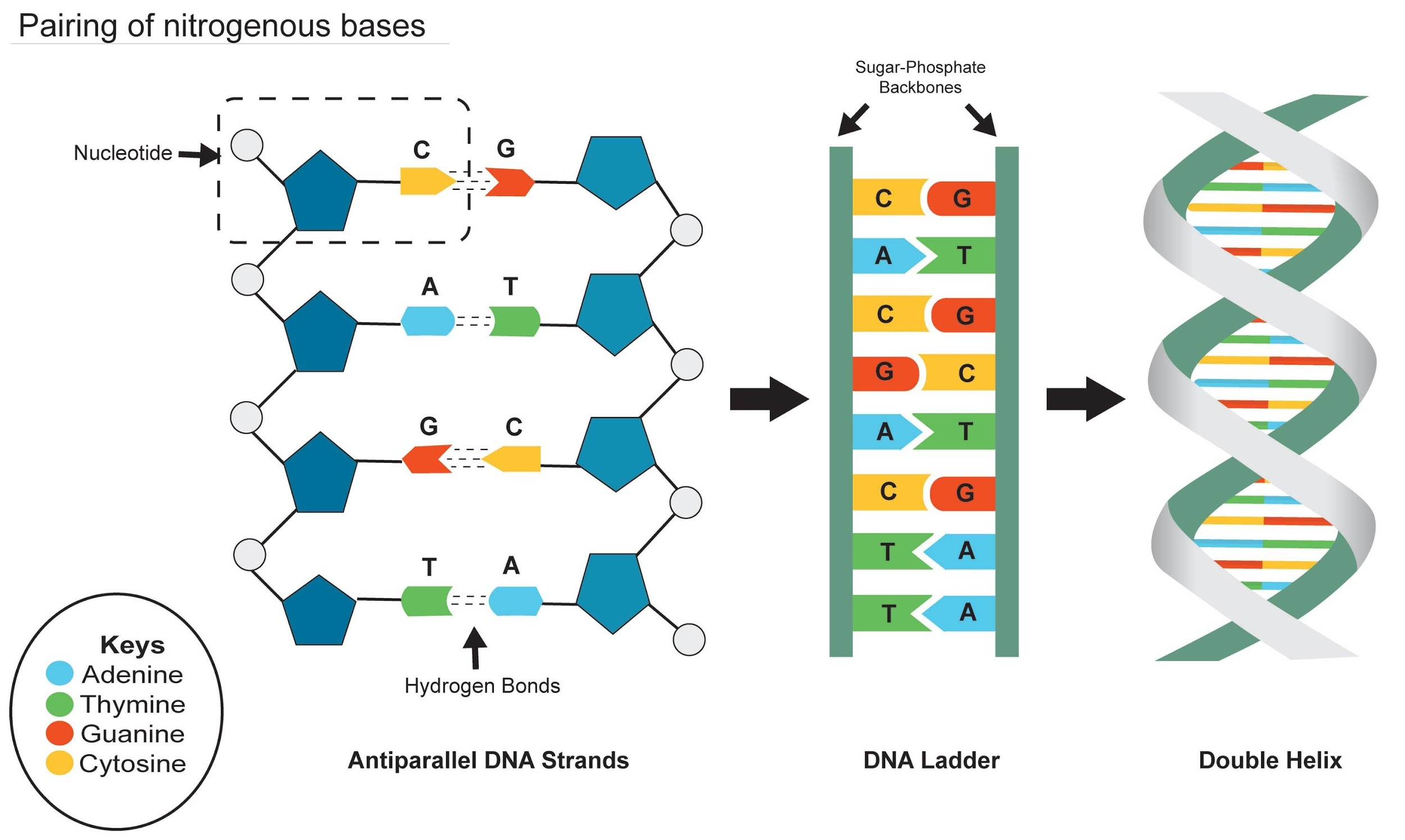
Adenine of DNA is equimolar with
(a) Uridine
(b) Thymine
(c) Guanine
(d) Cytosine
Answer
441.8k+ views
Hint: The DNA present in any cell of any organism should have a 1:1 stoichiometric ratio (base pair rule) of pyrimidine and purine bases and, more specifically, the amount of guanine should be equal to cytosine and the amount of adenine should be equal to thymine, known as The Chargaff's rules. According to the rule, this pattern is applicable in both strands of the DNA. This rule is discovered by a scientist named Austrian-born chemist Erwin Chargaff in the late 1940s.
Complete answer:
The nitrogenous bases are purines and pyrimidines. The purines are adenine and guanine. The pyrimidines are thymine and cytosine. The purines are double-ring structures while the pyrimidines are the single ring made up of carbon and nitrogen. Purines pair with the pyrimidines by hydrogen bonds. Adenine pairs with thymine by two hydrogen bonds while the cytosine pairs with the guanosine by three hydrogen bonds. According to Chargaff’s rule, the total number of adenine is equal to the total number of thymine and a 1:1 ratio exists between pyrimidine and purine bases.

Additional information:
1) First parity rule by Chargaff is that a double-stranded DNA molecule, globally has percentage base-pair equality:
2) Chargaff gave the second parity rule as that both
3) In bacterial genomes, the combined effect of Chargaff's second rule and Szybalski's rule can be seen where the coding sequences are not equally distributed. The genetic code has 64 codons of which 3 functions as termination codons: there are only 20 amino acids normally present in proteins.
4) There are two uncommon amino acids found in a limited number of proteins and encoded by the stop codons. They are selenocysteine (TGA) and pyrrolysine (TAG) .
So, the correct answer is, ‘Thymine’.
Note: The covalent bond joined the nucleotides together between the phosphate group of one nucleotide and the third carbon atom of the pentose sugar in the next nucleotide which produces the polynucleotide chain all along with an alternating backbone of sugar-phosphate - sugar-phosphate.
Complete answer:
The nitrogenous bases are purines and pyrimidines. The purines are adenine and guanine. The pyrimidines are thymine and cytosine. The purines are double-ring structures while the pyrimidines are the single ring made up of carbon and nitrogen. Purines pair with the pyrimidines by hydrogen bonds. Adenine pairs with thymine by two hydrogen bonds while the cytosine pairs with the guanosine by three hydrogen bonds. According to Chargaff’s rule, the total number of adenine is equal to the total number of thymine and a 1:1 ratio exists between pyrimidine and purine bases.

Additional information:
1) First parity rule by Chargaff is that a double-stranded DNA molecule, globally has percentage base-pair equality:
2) Chargaff gave the second parity rule as that both
3) In bacterial genomes, the combined effect of Chargaff's second rule and Szybalski's rule can be seen where the coding sequences are not equally distributed. The genetic code has 64 codons of which 3 functions as termination codons: there are only 20 amino acids normally present in proteins.
4) There are two uncommon amino acids found in a limited number of proteins and encoded by the stop codons. They are selenocysteine (TGA) and pyrrolysine (TAG) .
So, the correct answer is, ‘Thymine’.
Note: The covalent bond joined the nucleotides together between the phosphate group of one nucleotide and the third carbon atom of the pentose sugar in the next nucleotide which produces the polynucleotide chain all along with an alternating backbone of sugar-phosphate - sugar-phosphate.
Recently Updated Pages
Master Class 11 Economics: Engaging Questions & Answers for Success

Master Class 11 Business Studies: Engaging Questions & Answers for Success

Master Class 11 Accountancy: Engaging Questions & Answers for Success

Master Class 11 English: Engaging Questions & Answers for Success

Master Class 11 Computer Science: Engaging Questions & Answers for Success

Master Class 11 Maths: Engaging Questions & Answers for Success

Trending doubts
State and prove Bernoullis theorem class 11 physics CBSE

1 ton equals to A 100 kg B 1000 kg C 10 kg D 10000 class 11 physics CBSE

State the laws of reflection of light

One Metric ton is equal to kg A 10000 B 1000 C 100 class 11 physics CBSE

1 Quintal is equal to a 110 kg b 10 kg c 100kg d 1000 class 11 physics CBSE

Difference Between Prokaryotic Cells and Eukaryotic Cells




